
How to Use 5V DC Power Supply: Examples, Pinouts, and Specs
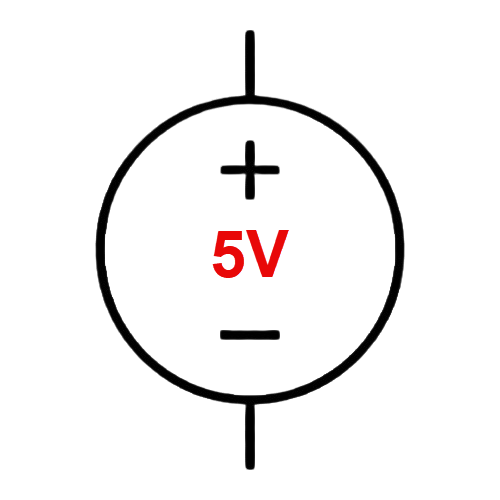
 Design with 5V DC Power Supply in Cirkit Designer
Design with 5V DC Power Supply in Cirkit DesignerIntroduction
The 5V DC Power Supply is a device designed to convert alternating current (AC) voltage from the mains into a stable 5V direct current (DC) output. This component is widely used in powering electronic circuits, microcontrollers, sensors, and other low-voltage devices. Its compact design and reliable performance make it an essential component in various applications, including prototyping, embedded systems, and consumer electronics.
Explore Projects Built with 5V DC Power Supply
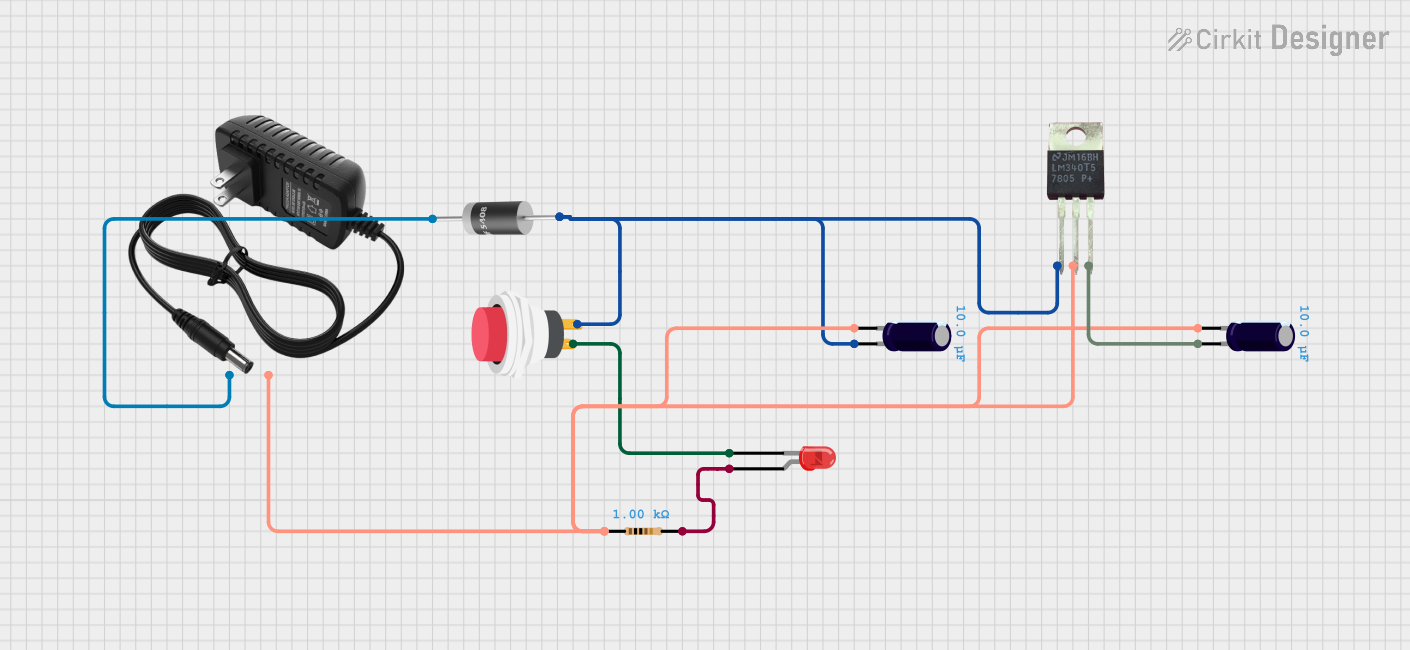
 Open Project in Cirkit Designer
Open Project in Cirkit Designer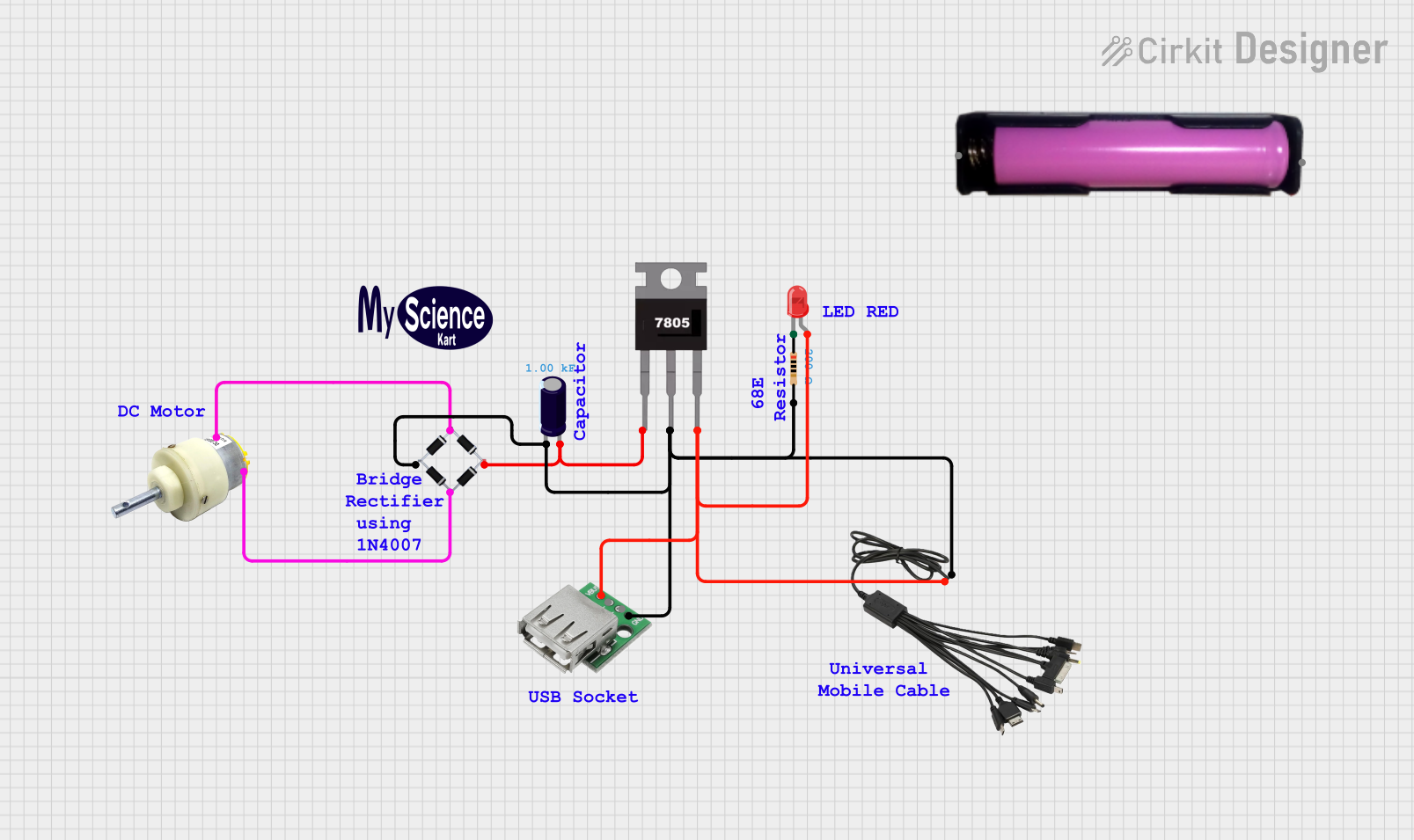
 Open Project in Cirkit Designer
Open Project in Cirkit Designer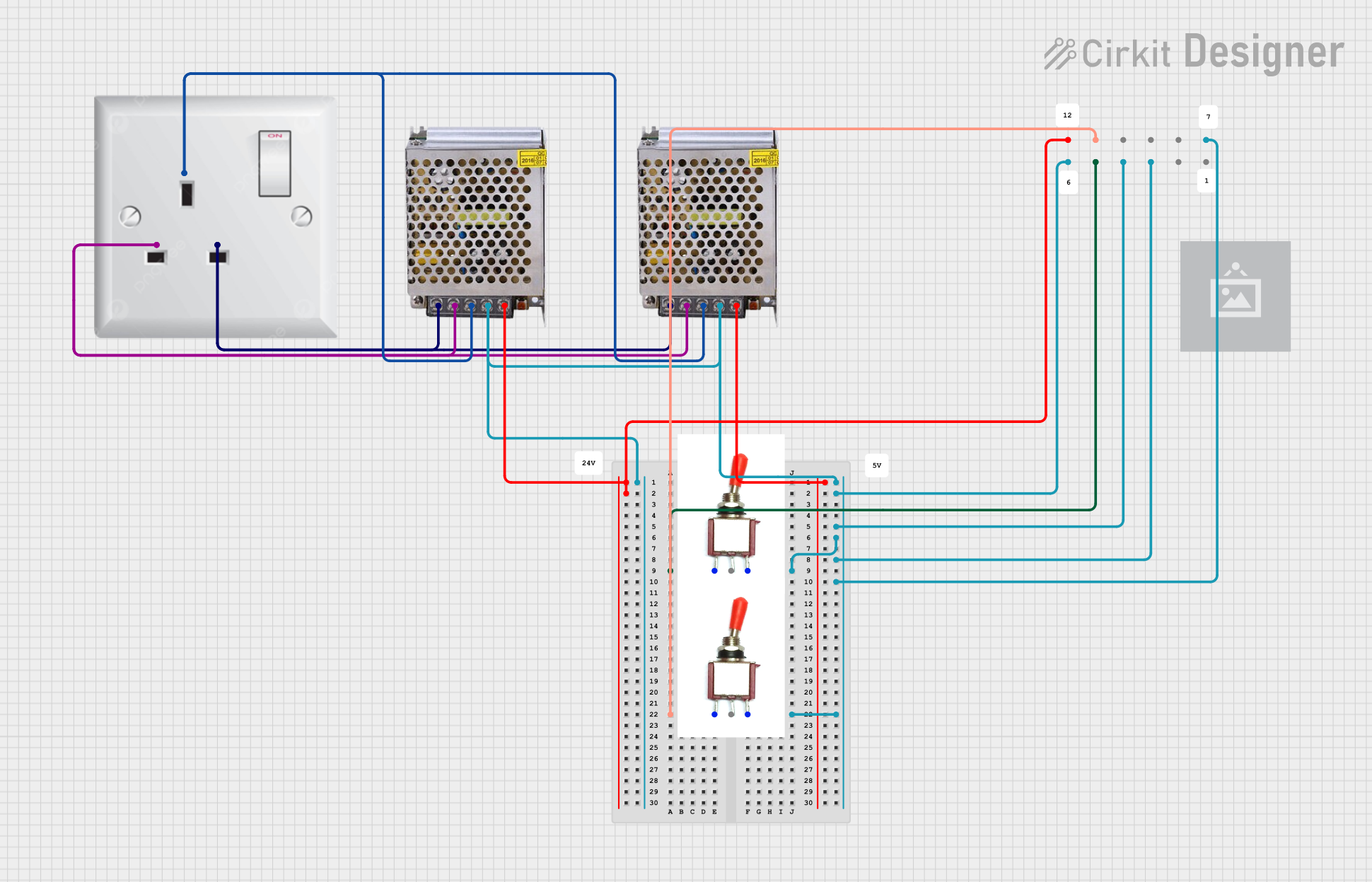
 Open Project in Cirkit Designer
Open Project in Cirkit Designer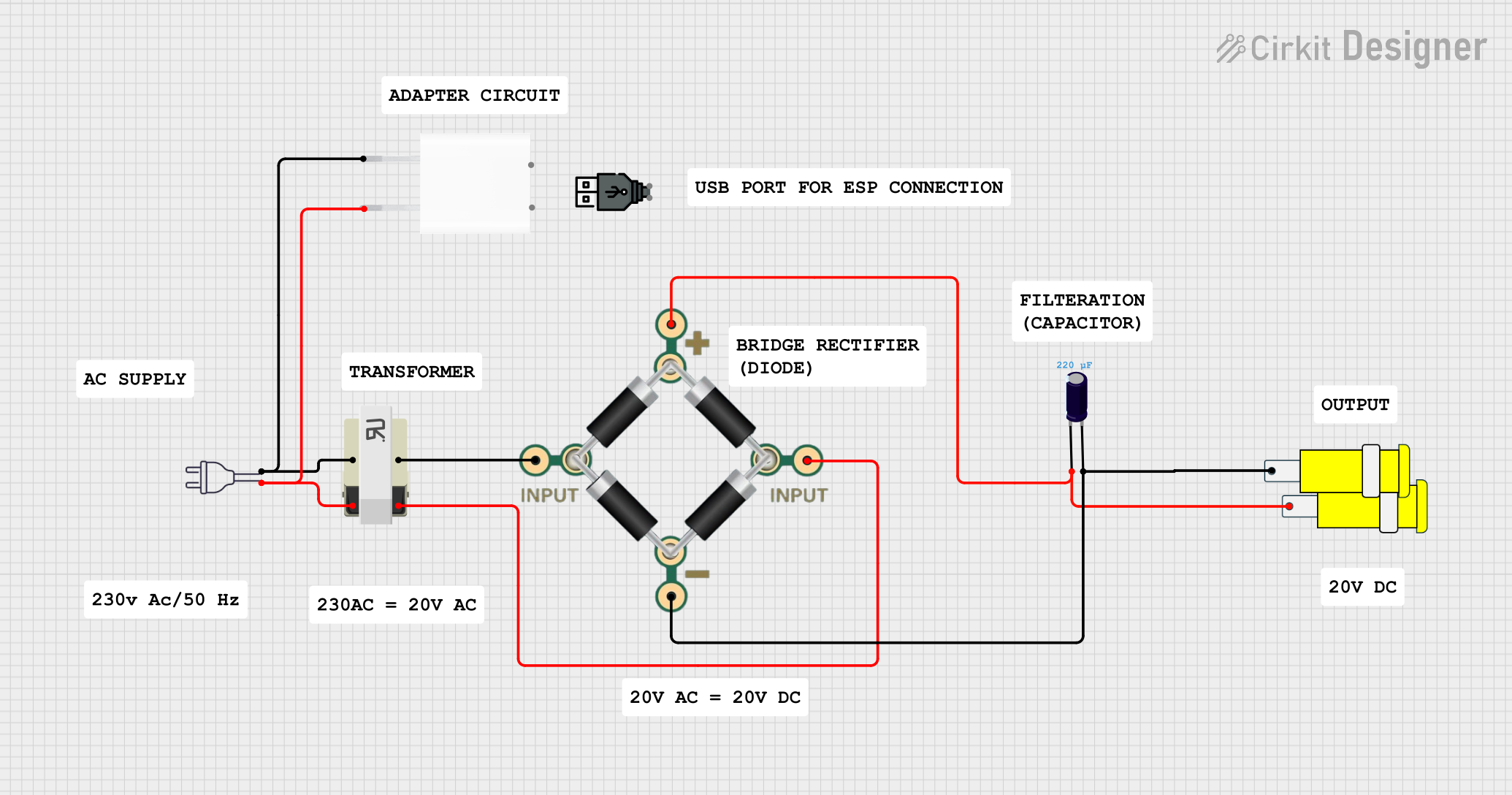
 Open Project in Cirkit Designer
Open Project in Cirkit DesignerExplore Projects Built with 5V DC Power Supply

 Open Project in Cirkit Designer
Open Project in Cirkit Designer
 Open Project in Cirkit Designer
Open Project in Cirkit Designer
 Open Project in Cirkit Designer
Open Project in Cirkit Designer
 Open Project in Cirkit Designer
Open Project in Cirkit DesignerCommon Applications and Use Cases
- Powering microcontrollers such as Arduino, Raspberry Pi, and ESP32.
- Supplying power to sensors, relays, and small motors.
- Charging USB-powered devices.
- Providing a stable voltage source for breadboard circuits and prototyping.
Technical Specifications
The following table outlines the key technical details of the 5V DC Power Supply:
| Parameter | Value |
|---|---|
| Input Voltage | 100-240V AC, 50/60Hz |
| Output Voltage | 5V DC |
| Output Current | Typically 1A to 3A (varies by model) |
| Power Rating | 5W to 15W (depending on model) |
| Efficiency | ≥ 80% |
| Ripple and Noise | ≤ 50mV |
| Operating Temperature | -10°C to 50°C |
| Protection Features | Overload, short circuit, overvoltage |
Pin Configuration and Descriptions
The 5V DC Power Supply typically has the following connections:
| Pin/Connector | Description |
|---|---|
| AC Input (L, N) | Live (L) and Neutral (N) terminals for mains input. |
| Ground (GND) | Ground connection for the DC output. |
| DC Output (+5V) | Positive 5V DC output terminal. |
For USB-based 5V DC power supplies, the pinout follows the USB standard:
- VCC (Red wire): +5V DC output.
- GND (Black wire): Ground connection.
Usage Instructions
How to Use the 5V DC Power Supply in a Circuit
Connect the AC Input:
- Ensure the power supply is rated for your local mains voltage (e.g., 110V or 220V).
- Connect the Live (L) and Neutral (N) terminals to the mains power source.
- If using a USB-based power supply, plug it into a compatible wall adapter or USB port.
Connect the DC Output:
- Use the +5V and GND terminals to power your circuit.
- Ensure the connected load does not exceed the maximum current rating of the power supply.
Verify Connections:
- Double-check all connections to avoid short circuits or incorrect wiring.
- Use a multimeter to confirm the output voltage is 5V DC before connecting sensitive components.
Power On:
- Turn on the mains power or plug in the USB power supply.
- Monitor the circuit for proper operation.
Important Considerations and Best Practices
- Load Capacity: Ensure the total current draw of your circuit does not exceed the power supply's maximum current rating.
- Heat Dissipation: Allow adequate ventilation around the power supply to prevent overheating.
- Polarity: Always connect the +5V and GND terminals correctly to avoid damaging your components.
- Isolation: For safety, avoid direct contact with the AC input terminals.
Example: Using a 5V DC Power Supply with an Arduino UNO
The 5V DC Power Supply can be used to power an Arduino UNO via its 5V pin. Below is an example of how to connect and use it:
- Connect the +5V output of the power supply to the 5V pin on the Arduino UNO.
- Connect the GND output of the power supply to the GND pin on the Arduino UNO.
- Upload the following code to the Arduino UNO to blink an LED:
// Simple LED Blink Example
// This code blinks an LED connected to pin 13 of the Arduino UNO.
void setup() {
pinMode(13, OUTPUT); // Set pin 13 as an output pin
}
void loop() {
digitalWrite(13, HIGH); // Turn the LED on
delay(1000); // Wait for 1 second
digitalWrite(13, LOW); // Turn the LED off
delay(1000); // Wait for 1 second
}
Troubleshooting and FAQs
Common Issues and Solutions
No Output Voltage:
- Cause: The power supply is not connected to the mains or the input voltage is incorrect.
- Solution: Verify the AC input connections and ensure the mains voltage matches the power supply's input range.
Overheating:
- Cause: The power supply is overloaded or lacks proper ventilation.
- Solution: Reduce the load or ensure adequate airflow around the power supply.
Voltage Fluctuations:
- Cause: High ripple or noise due to poor-quality components or excessive load.
- Solution: Use a higher-quality power supply or reduce the load.
Short Circuit Protection Triggered:
- Cause: A short circuit in the connected circuit.
- Solution: Inspect the circuit for wiring errors or damaged components.
FAQs
Q1: Can I use a 5V DC power supply to charge my smartphone?
A1: Yes, if the power supply has a USB output and meets the current requirements of your smartphone.
Q2: What happens if I connect a load that exceeds the power supply's current rating?
A2: The power supply may shut down, overheat, or become damaged. Always ensure the load is within the specified current limit.
Q3: Is it safe to use the power supply outdoors?
A3: Most 5V DC power supplies are not weatherproof. Use them indoors or in a protected environment.
Q4: Can I use this power supply with a Raspberry Pi?
A4: Yes, as long as the power supply provides sufficient current (e.g., 2.5A for Raspberry Pi 4).